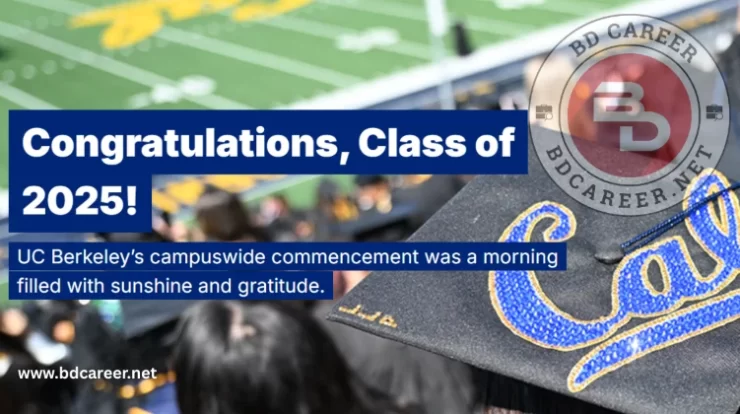
The concept of smart cities lies at the heart of rethinking how we live, work, and interact with our surroundings, particularly in an era of rapid urban growth and technological advancement. Cities worldwide are striving to be more efficient, sustainable, and welcoming by leveraging data, connections, and innovative ideas. Research is at the centre of this change, and the University of Texas at Austin (UT Austin) is one of the schools that is most actively working towards this goal.
UT Austin is in a unique position to lead the way to smarter urban futures because it has a long history of success in engineering, computing, public policy, and environmental research. The university is creating actual changes to how cities are built, run, and kept up through working together across disciplines and with businesses in the real world.
Contents
- Smart Cities: How UT Austin is Helping to Innovate in Cities
- Interdisciplinary Research Centres Making a Difference
- How to Use What You Learn in the Real World and Work with the City
- Fairness and Sustainability at the Heart
- From School to Work: How Startups and Partnerships Speed Up New Ideas
- Teaching the Next Generation of City Innovators
- Looking Ahead: Making a Bigger Difference Around the World
- Conclusion
Smart Cities: How UT Austin is Helping to Innovate in Cities
Smart cities want to employ technology and sustainability in urban planning so that decisions can be made based on data, resources can be used more efficiently, and quality of life can be improved. Austin is a booming tech-forward city that is perfect for trying out and putting into use smart city ideas.
Researchers at UT Austin may test their ideas in the real world because the school is close to this lively city. The institution not only teaches theory, but it also helps put technological solutions into action that aid the whole community. UT Austin is strongly involved in reimagining urban development, from smart transport systems to strong infrastructure and data-driven governance.

Interdisciplinary Research Centres Making a Difference
UT Austin has a big influence because it has research centres that bring together scientists, engineers, designers, and policymakers from many fields.
Texas Advanced Computing Centre (TACC)
TACC runs data-heavy programs that use huge datasets from cities to make city management better. TACC’s computer infrastructure lets urban planners employ predictive analysis to make smart decisions, such as modelling the energy system and simulating traffic in real time.
Centre for Transportation Research (CTR)
The Centre for Transportation Research (CTR) works to make it easier for people to get around in cities that are growing. Some of its projects are testing self-driving cars, making traffic management systems smarter, and making public transport more efficient. These are all important for cities that want to cut down on traffic and pollution.
Urban Information Lab (UIL)
Urban Information Lab (UIL) combines geographic information systems (GIS), the Internet of Things (IoT), and urban informatics. It makes visual tools that assist people in comprehending urban patterns, including changes in population, energy use, and social inequality. This makes city planning more open and responsive.
These centres work together to develop a knowledge ecosystem that is both technologically advanced and socially sensitive. This makes sure that new ideas meet the needs of all city residents.
How to Use What You Learn in the Real World and Work with the City
UT Austin is more than simply a think tank; it’s a place where big ideas can take off. The institution works directly with the City of Austin and other public agencies to try out new smart city ideas.
Smart ways to move about and deal with traffic
Researchers have set up AI-powered traffic lights that change in real time based on how much traffic there is. This cuts down on travel times and vehicle emissions. The University of Texas at Austin helps Austin manage traffic better during busy times and large events by combining data from sensors, GPS, and mobile devices.
Digital Twins and Simulations of Cities
UT Austin has worked with municipal planners to create “digital twin” models of the city. These are real-time virtual copies that may be used to test different scenarios. These models may show how energy flows and people walk around, which helps city planners predict how new buildings or improvements to existing ones would affect the city.
Networks for Monitoring the Environment
UT’s flood prediction algorithms and air quality sensors are already up and running in several neighbourhoods in Austin. These IoT-based systems let city authorities and residents know about threats in real time, which makes emergency response better and keeps the community safer.
These partnerships indicate that research doesn’t only stay on campus; it also affects how cities are planned and run.

Fairness and Sustainability at the Heart
Technology is generally the main topic of smart city talks, but UT Austin also puts a lot of focus on sustainability and social equality. Researchers are working to make sure that smart city projects don’t leave out populations who don’t get enough help.
Research on Urban Equity and Affordable Housing
The architecture and public policy departments at the university look at how urban data might assist in fixing problems with housing shortages and economic inequality. UT helps city authorities make development strategies that are fairer by documenting trends in evictions, income inequality, and access to public services.
Infrastructure that is good for the environment and can handle climate change
Engineers and environmental scientists at UT design green buildings, smart water systems, and public spaces that are good for the environment and make cities more livable. Austin is getting ready for climate change with projects like solar-powered microgrids and systems that absorb stormwater.
UT Austin makes sure that innovation helps everyone, not just the rich or tech-savvy, by including social responsibility in smart city plans.
From School to Work: How Startups and Partnerships Speed Up New Ideas
The University of Texas at Austin is also crucial for making urban technology accessible to businesses and fostering entrepreneurship. The Innovation Centre and Austin Technology Incubator (ATI) help new businesses that come out of academic research.
Startups in Urban Tech
Companies that started at UT are producing smart parking, waste management, last-mile delivery, and public health surveillance solutions. These new businesses get help from mentors, lab space, and access to local partners.
Partnerships in the industry
UT collaborates closely with major companies such as IBM, Dell, Tesla, and Google, all of which have substantial offices in Austin. These partnerships make it possible to use smart technology on a large scale and bring industrial knowledge back to research labs.
This close feedback loop between research, business, and government speeds up new ideas and cuts down on the time it takes to turn an idea into action.
Teaching the Next Generation of City Innovators
Education is a key part of UT Austin’s smart city aim. The institution teaches students how to be leaders in urban innovation in many different fields.
Integrating the curriculum
Smart infrastructure, data ethics, and urban AI are increasingly part of the curricula for civil engineering, environmental design, public affairs, and computer science. Students work on initiatives that are important to the real world, typically with city departments and entrepreneurs.
Community Projects and Student Involvement
UT holds citywide hackathons and innovation contests that give students the tools to build civic tech apps. Students help make cities better by making things like mobile apps that assist people discover cooling centres during heat waves and tools that show how zoning changes will affect the city.
By teaching smart city principles in schools, UT makes sure there will always be a steady stream of skilled, socially aware workers ready to tackle the problems cities face.

Looking Ahead: Making a Bigger Difference Around the World
UT Austin’s work on smart cities goes beyond Austin. The institution is sending its models to other places around the world through international partnerships and worldwide research networks.
UT’s digital twin technology is being used in Latin America and Asia on projects that are still going on in informal settlements and places that are likely to have disasters. In addition, faculty members are giving advice to national governments and international organisations on how to make cities more resilient and how to regulate technology.
UT Austin’s interdisciplinary and collaborative approach is a great example of how to make cities more sustainable as they deal with the problems of climate change and urban inequality.
Conclusion
Not only will technology shape the future of cities, but also people, researchers, planners, and communities working together to address challenges that affect everyone. The University of Texas at Austin’s smart city study is all about working together.
The University of Texas at Austin is helping to create cities that are smarter, greener, fairer, and more habitable by bringing together people from diverse fields, including computer science, engineering, social sciences, and public service. The university’s work will continue to be important in making cities better, one byte, one building, and one community at a time, as cities develop and change.





